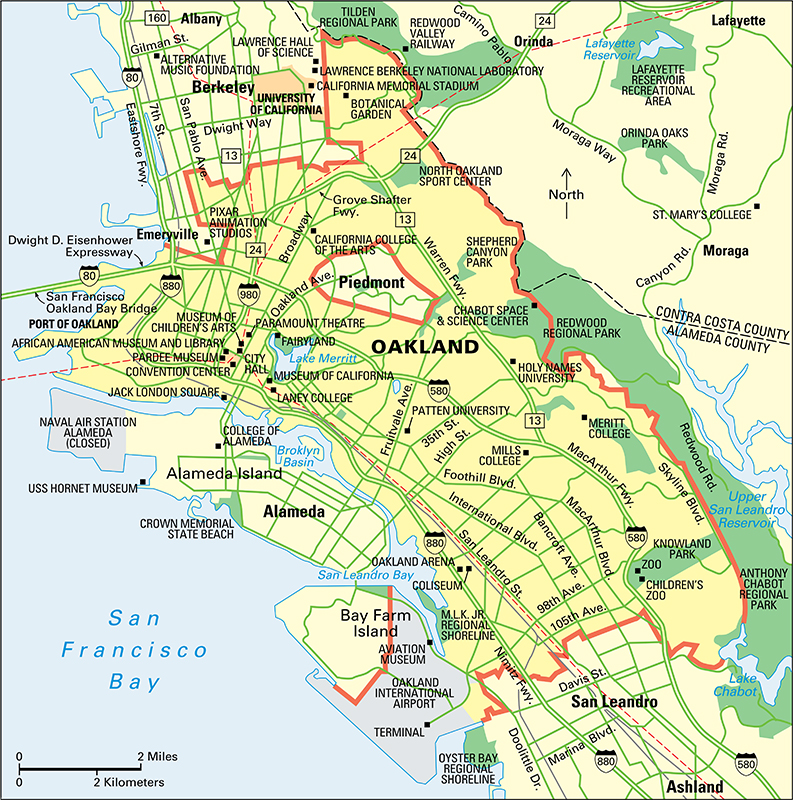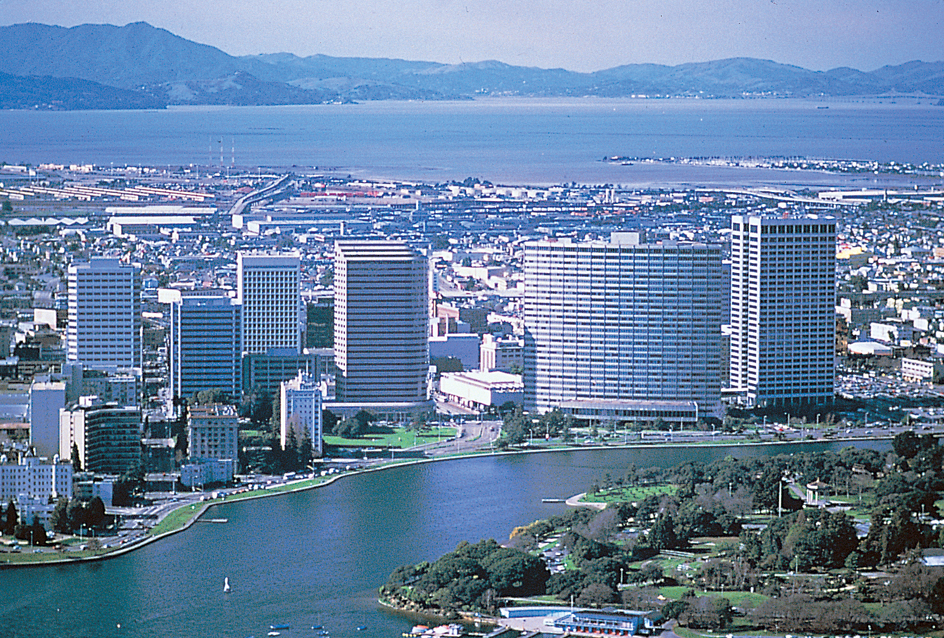Oakland (pop. 440,646) is one of the busiest shipping centers in California. The city lies on the eastern shore of San Francisco Bay, an inlet of the Pacific Ocean. Oakland is 3 miles (4.8 kilometers) across the bay from San Francisco. Oakland was founded after the discovery of gold in California in 1848. The city was named for the oak trees that grew on its hills.

Description.
Oakland is the seat of Alameda County. Oakland, San Francisco, and Fremont are part of a metropolitan area. Lake Merritt lies in the heart of downtown Oakland. The oldest wildlife refuge in North America was established at Lake Merritt in 1870. Jack London Square includes the bay waterfront that was visited frequently by the author for whom it was named.

Attractions in the city include the Oakland Museum of California, the Chabot Space & Science Center, and the Oakland East Bay Symphony. The African American Museum and Library at Oakland includes letters, diaries, and photographs that share the experiences of Black people in California. Colleges in Oakland include California College of the Arts, Holy Names University, Mills College at Northeastern University, and Patten University. Oakland is home to the Oakland Athletics baseball team of the American League.
Economy.
Oakland is a major transportation center. The Port of Oakland is one of the world’s busiest ports for container ships. The western terminals of several freight railroad systems are in Oakland. Passenger trains link Oakland with other cities in the United States. The Bay Area Rapid Transit system (BART), a regional rail system, has its headquarters in the city. Air travelers use Oakland International Airport.
A majority of Oakland’s workers are employed in service industries. Important economic activities in the city include business and health care services, food processing, and transportation.
Government and history.
Oakland has a mayor-council form of government. The voters elect a mayor and eight council members to four-year terms. The mayor appoints a city administrator to carry out the city’s policies.
A Native American people called the Ohlone, also called the Costanoan, lived in what is now Oakland before European settlers arrived. In the 1770’s, Spanish explorers and missionaries became the first Europeans to reach the region. In 1820, Luis Maria Peralta, a Spanish soldier, received a land grant that included most of the area that is now Alameda County. By 1849, merchants, loggers, and gold seekers had begun to settle the region. Oakland was incorporated as a town in 1852 and as a city in 1854.
Oakland’s population grew rapidly after it was chosen as the western terminus (end) of the first transcontinental railroad in 1869. About 65,000 people settled in the city in 1906 after fleeing the San Francisco earthquake. Industrial expansion took place through the 1920’s. Many automobile manufacturers and food processing and steel companies were established in the city. Oakland became a major port and shipbuilding center during World War II (1939-1945).
In the 1970’s, the city began several urban renewal projects in the downtown area. Construction of Oakland City Center, a complex of office buildings and retail stores, was completed in 1990. Preservation Park, a showplace of historic homes that were moved from other parts of the city, opened in 1991.
A strong earthquake struck Oakland and the surrounding area in October 1989. As a result of the earthquake, a portion of the upper level of the city’s double-decked Nimitz Freeway, or Interstate Highway 880, collapsed onto the lower level. The earthquake caused 43 deaths and extensive property damage in Alameda County. In October 1991, a brush fire in Oakland killed 25 people and caused much property damage.
In the late 1990’s, businesses and residents began relocating from an overcrowded San Francisco to Oakland. Redevelopment programs continued into the 2000’s.
An accidental fire at an Oakland warehouse and artists’ studio in December 2016 killed 36 people. In 2019, two men responsible for the so-called Ghost Ship space were tried on charges of involuntary manslaughter. One of the defendants was found not guilty. The other man later pleaded guilty in exchange for a reduced prison sentence. In 2020, the city of Oakland paid $33 million to settle civil lawsuits, filed on behalf of victims, who claimed authorities had been aware of hazardous conditions in the building.
